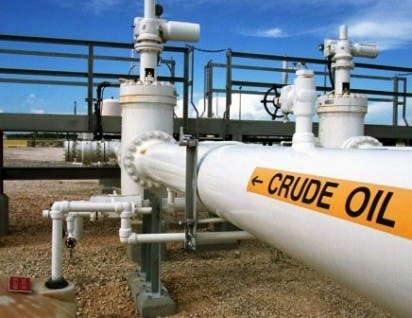Nigeria’s oil revenue profile is set to witness a steady rise as the International Energy Agency (IEA) has predicted a major oil demand rebound of 6.5 million barrels per day (bpd) between Q1 and end-2021.
The Nigerian National Petroleum Corporation (NNPC) had in a letter to the Accountant General of the Federation projected that it would deduct N112 billion oil and gas proceeds from the federations account for fuel subsidy in order to ensure continuous supply of petroleum products in the country and guarantee energy security.
Read Also: Crude Oil Prices Rise After Colonial Pipeline Cyberattack
However, industry observers believe that the projection by the IEA will help Nigeria balance its weak revenue profile, especially in the face of huge fuel subsidy which has led to a drastic cut in revenue accruable to state from FAAC.
Nigeria currently produces less than two million barrels per day (bpd) in strict compliance with OPEC agreements.
OPEC + had called on Nigeria to implement compensation cuts of 283,000 bpd from August through December 2020 to make up for over production in previous months.
NNPC Group Managing Director, Mallam Mele Kyari, had said in January this year that Nigeria is complying with OPEC+ curbs and has implemented so-called “compensation cuts” to make up for the reduced crude production.
The Organization of Petroleum Exporting Countries (OPEC) at a meeting on Tuesday cut its demand forecast by for the second quarter by 300.000 bpd day.
OPEC and its allies, known as OPEC+, agreed in April to gradually ease oil output cuts from May, after the new U.S. administration called on Saudi Arabia to keep energy affordable for consumers.
IEA however, said likely supply growth, by the OPEC+ group and others, would be “nowhere close” to the expected demand increase.
In its monthly oil market report, the IEA also noted oil stocks held by the OECD developed countries were returning to “more normal” levels, based on figures from April showing levels just 1.7 million barrels above the five-year average.
The IEA’s bullish assessment for the year ahead came despite it lowering its overall demand growth estimate for 2021 as a whole by 270,000 b/d to 5.4 million b/d, and trimming its estimate of the “call” for OPEC crude in the second half of this year by 200,000 b/d, based on downgrades to first-quarter demand in Europe and North America, and a major reduction in India’s estimated second-quarter demand, of 630,000 b/d, due to the pandemic.
The report, implying a need for OPEC+ to relax its production curbs even if sanctions against Iran are eased, also gave a lower estimate for US oil output this year compared with last month’s report, with an expected contraction of 160,000 b/d, due both to lower shale activity and reduced expectations from fields in the Gulf of Mexico.

